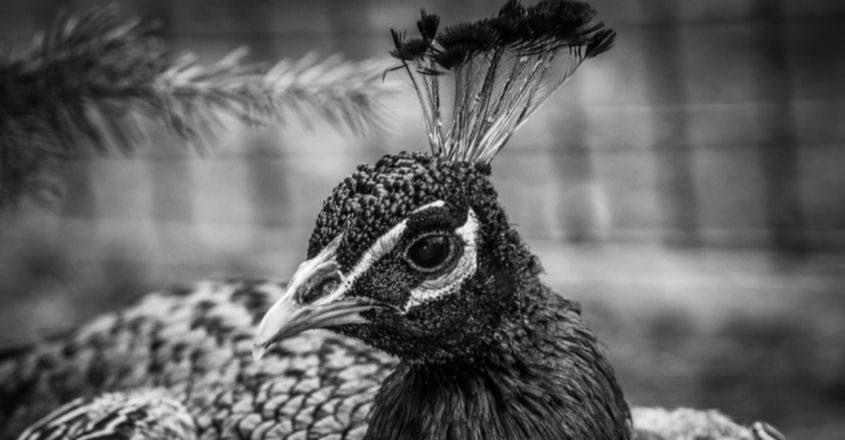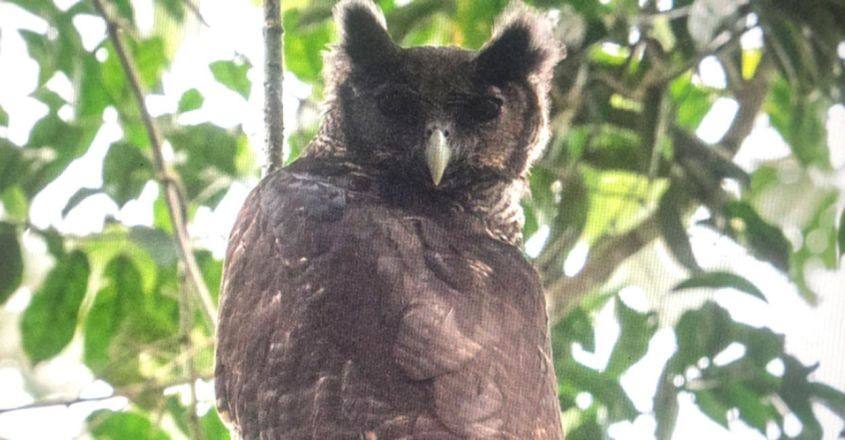A Journey Through Some Of The Rarest Bird Species In The World
Black peacocks found in Bidar, Karnataka; Rare of the rare!

Peacocks are our national birds. We are reminded of their majestic appearance when we hear about these birds, which spread out in royal blue. This beautiful look is for male peacocks, and female peacocks are generally grey. Images of white albino peacocks are also frequently circulated. There are also different types of peacocks that come in various shades of green and blue. But the black peacocks were found by the Bombay Natural History Society in Bidar, Karnataka, yesterday. These are rare peacocks, and it is estimated that there are only 600 such peacocks in India.
Chondigudi, located in the Aurad Taluk of Bidar District in Karnataka, is a village in the Chatnala district in Kerala, India. The team led by Biwash Pandav found and confirmed the black peacocks; this is the first time they have been found in Karnataka. Earlier, peacocks were found only in Gujarat, Andhra Pradesh, and Rajasthan, which are not usually cut that way. Scientists at the Society say that peacocks have a form that everyone has in mind and that no one would at first think they were peacocks when they saw them. Now is the breeding season, and that’s why they were caught in groups, they say. Scientists say there are plans to build a nest here, and locals should be prepared to support it.
The Bombay Natural History Society was established in 1883. The first members were two British and two Indians. The society was established to conserve and research biodiversity. Celebrities like Salim Ali have been associated with this organisation. Today, the Bombay Natural History Society is one of India’s most prominent NGOs in zoology and botany.
Gold penguin found in the Atlantic; Amazing pictures

Wes Adams, a Belgian wildlife photographer, took beautiful pictures of this penguin from the island of South Georgia in the South Atlantic Ocean. Adams, who had been touring the South Atlantic and the Antarctic for two months, had also reached the South Georgian coast. Adams, who sailed from his ship to the island, was greeted by South Georgia’s rich biodiversity. Giant seagulls roamed the shores and surrounding waters. Tens of thousands of penguins, like managers in black and white coats and suits, were with them. In the meantime, there is someone—a beautiful yellow penguin with a nice yellow jersey like Brazil. The yellow-clad King Penguin swam to face Adams and his team. Then he stopped playing in the water and went ashore and walked with his crew. Meanwhile, Adams had taken thousands of pictures.
Adams initially thought that the penguin’s yellow colour might be due to an albino phenomenon found in many species. But then I realised that this was a slightly different situation in communication with experts. This condition is called leucism due to the low levels of melanin, the pigment in the body. The thing is, this is exciting news for us, with the penguin being notable. But experts say the penguin will suffer because of this.
Melanin deficiency affects not only the colour but also the strength of the feathers. The feathers of the golden penguin are weaker than those of the others. Feathers play an essential role in penguins swimming in water. The golden penguin is not able to swim as efficiently as other penguins. He will soon be exhausted. The yellow penguin is also vulnerable to predation. The penguin is very careful when hunting the fish that come into the sea. Hunting takes only seconds. The black and white colour hides the penguins from the fish and facilitates hunting. But the yellow coat does not have that ability. The fish will quickly recognise the presence of the hunter and escape.
Penguins are colonised animals. They identify their group by looking at its morphological features. In this case, the different yellow penguins are less likely to be approached by others. It is less likely to get a mate for the same reason. In short, the golden penguin’s life is full of misery. The British-occupied islands of South Georgia, south of the South American continent, are the gateway to Antarctica. These islands, located close to the Falkland Islands, are sparsely populated. Only 30 people live here. Most of these were British explorers. But the islands are a significant natural centre. Although human habitation is sparse, the biodiversity is very extensive here.
Three crore birds inhabited the island, including 7 million penguins and 2.5 million albatross seabirds. The main penguins here belong to two groups. Macaroni and King Penguin. There are about five million king penguins here. They can grow up to 1.5 feet in height and weigh up to 16 kg. They have four feathers, and their outer shell is oily and water-resistant. They are usually found in a mixture of white and black and have yellow spots on the head, which is the main sign to identify them.
They live in colonies and breed in these places. They breed at the rate of two children in three years. In addition to the macaroni and king, you can also find penguins such as Chinstrap and Gentoo. In addition, seals such as elephant seals and Antarctic fur seals have made their homes on the islands of South Georgia. These islands have a prominent place on the world’s physical map as breeding grounds for all of these. Tourists also flock here as there is an opportunity to get acquainted with all this. Many companies operate cruises and study cruises from South America and the Falkland Islands to South Georgia. The creatures on these islands are not afraid of humans, as they have little contact with them. So, they would only resort to this as a last resort.
The Hawk or the owl? Hidden 150 years, extraordinary size; Found in the African rainforest?

The forests of Ghana, one of the Central African countries, are home to the world’s largest owl species. Named Shelley’s Eagle Owl, they have been nicknamed the Hawk because of their unusual size. However, despite their large size, they are not easy to find due to their habitat characteristics. According to official figures, the owl was last spotted in the 1870s in the last week of October. Although it has been claimed to have been seen frequently since then, no scientific evidence has been found. He is a professor of biology at Imperial College London. Dr. Joseph Tobias, a freelance environmental researcher, The owl was discovered and photographed by Robert Williams. It is an excellent achievement for the scientific community to capture the image of this owl, an expert at hiding among ordinary leaves.
Researchers have found that the owl was giant, resembling a hawk. Tobias explained that for some time, they had mistaken themselves for hawks. But the owl was sitting on a relatively shorthorn. The duo then explained that they were stunned when they looked through binoculars. They say that no other African owl is so large, and at first glance, it looks like Shelley’s Eagle Owl.
Before this, there were two paintings of this owl. One of them is still a matter of controversy. This image, taken in 2005 from the Congo, was not immediately clear. Another picture shows an owl of the same species found at the Antwerp Zoo in 1975. However, after a detailed examination, it has been confirmed that Shelley’s eagle. Ghana is a researcher at the University of Environmental and Sustainable Development. Researchers, including Nathanian Anorba, attest to this. They say that the owl in the picture is the body structure of Shelley’s Eagle. The dark black eyes, yellow beak, and large body were crucial in recognizing the image of Shelley’s Eagle. Shelley’s Eagle Owl is currently listed as an endangered species by the International Biodiversity Conservation List. More than a thousand of these species live in the rainforests of Central Africa. It is thought to have owls.




